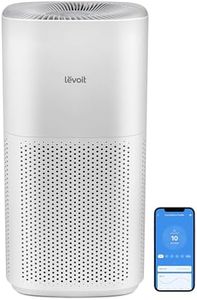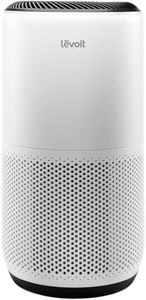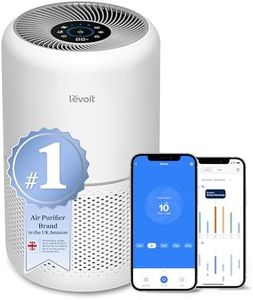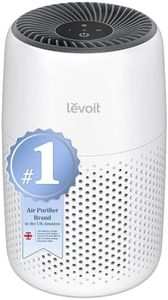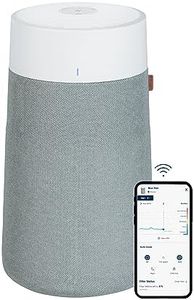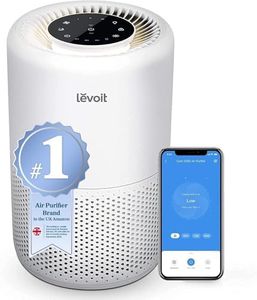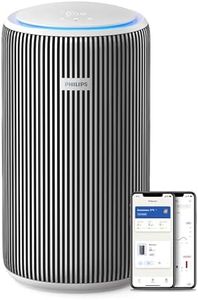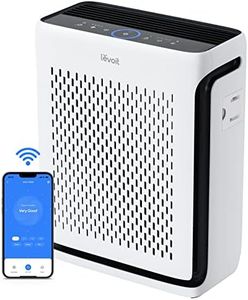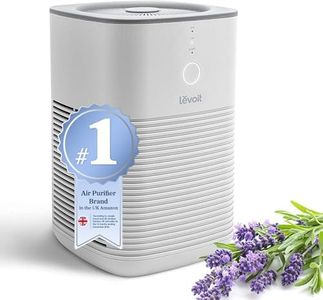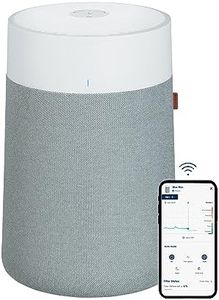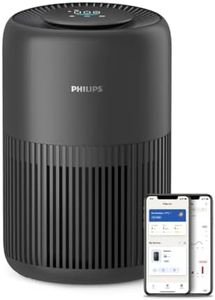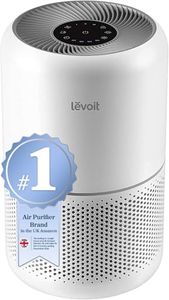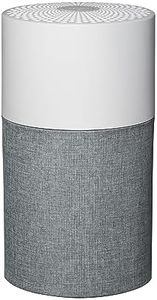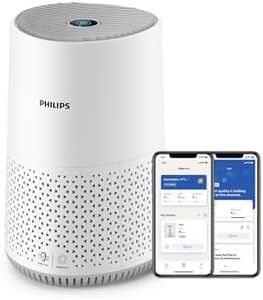We Use CookiesWe use cookies to enhance the security, performance,
functionality and for analytical and promotional activities. By continuing to browse this site you
are agreeing to our privacy policy
10 Best Air Purifier For Smoke Removal
From leading brands and best sellers available on the web.Buying Guide for the Best Air Purifier For Smoke Removal
When choosing an air purifier specifically for smoke removal, it's important to focus on features that effectively capture and eliminate smoke particles and odors. Smoke particles are typically very small, so you'll need a purifier that can handle these tiny particles efficiently. Additionally, consider the size of the room where the purifier will be used, as well as any specific health concerns or sensitivities you may have. By understanding the key specifications, you can make an informed decision that best suits your needs.HEPA FilterA HEPA (High-Efficiency Particulate Air) filter is crucial for smoke removal because it can capture particles as small as 0.3 microns with 99.97% efficiency. Smoke particles are often smaller than other common pollutants, so a true HEPA filter is essential. When choosing, ensure the purifier specifies a 'true HEPA' filter rather than 'HEPA-type' or 'HEPA-like,' as these may not be as effective. If you are dealing with heavy smoke, a true HEPA filter is a must-have to ensure the air purifier can effectively capture the fine particles.
Activated Carbon FilterAn activated carbon filter is important for removing smoke odors and volatile organic compounds (VOCs) that are often present in smoke. This filter works by adsorbing gases and odors onto its surface. When selecting an air purifier, look for one with a substantial amount of activated carbon, as this will be more effective in dealing with persistent smoke odors. If you are sensitive to smells or have a strong smoke odor to combat, prioritize models with a robust activated carbon filter.
CADR (Clean Air Delivery Rate)CADR measures the volume of air an air purifier can clean of specific pollutants (like smoke) per minute. A higher CADR indicates a more efficient air purifier. When choosing an air purifier for smoke, look for a high CADR rating specifically for smoke, as this will ensure the unit can handle smoke particles effectively. Consider the size of the room where the purifier will be used; larger rooms will require a higher CADR to ensure effective air cleaning.
Room Size CompatibilityRoom size compatibility ensures that the air purifier can effectively clean the air in the space where it will be used. Air purifiers are rated for specific room sizes, usually measured in square feet. To choose the right one, measure the room where you plan to use the purifier and select a model that can handle that size or slightly larger. If you use the purifier in a room larger than its capacity, it may not effectively remove smoke particles.
Noise LevelNoise level is an important consideration if you plan to use the air purifier in a bedroom or living area where quiet is preferred. Air purifiers can vary significantly in noise output, often measured in decibels (dB). If noise is a concern, look for models that offer a 'quiet' or 'sleep' mode, which operate at lower noise levels. Consider your tolerance for noise and where the purifier will be placed to choose a model that won't disrupt your environment.
Filter Replacement and MaintenanceRegular filter replacement and maintenance are crucial for the continued effectiveness of an air purifier. HEPA and activated carbon filters need to be replaced periodically, as specified by the manufacturer. When choosing an air purifier, consider the cost and availability of replacement filters, as well as how easy it is to replace them. If you prefer low-maintenance options, look for models with longer-lasting filters or indicators that alert you when it's time to change them.
